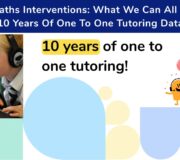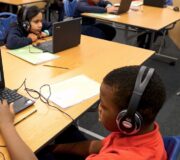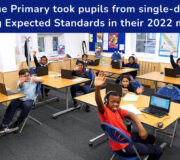Providing An Accessible Online Learning Environment For Children With Disabilities
Here at Third Space Learning, our goal is to work with as many schools as possible to make one-to-one math tutoring accessible to children with the greatest need. We are committed to creating a learning environment that supports any student no matter their needs, including students with an Individual Education Program (IEP).
That’s why developing an online classroom that’s inclusive to individuals with disabilities has always been a top priority for us.
More importantly, we have recently improved various areas, such as how our tutors prepare for sessions and the structure of our slides, to ensure that any Third Space Learner has the tools and support they need throughout their program to be engaged and confident with their mathematical skills.
Throughout this blog, we’re going to share various steps and actions we take to ensure we’re able to support any students to close the math attainment gap. This includes:
- How we acquire additional information from teachers about each student;
- The training and continuous professional development available to our tutors;
- The brand new tutor preparation area on our platform;
- High-impact improvements to our online classroom;
- Additional resources for you to use outside of interventions.
You can also watch a 3-minute clip of a session in action, which shows how one of our tutors, Iffah, is able to adapt her teaching to suit the needs of a student with IEP requirements in their one-to-one session.
- Getting to know each student’s needs so their learning journey is personalized
- Essential tutor training and CPD to learn how to adapt teaching strategies
- Tutors go into every session prepared to deliver effective math lessons
- Improving our online classroom to create an optimum learning environment
- Watch how a tutor adapts their teaching for a student with disabilities
- Additional resources suitable for every student in your classroom
- Ensuring Third Space Learning’s one-to-one tutoring is the right fit for your students
Getting to know each student’s needs so their learning journey is personalized
After delivering nearly 1.5 million one-to-one sessions, we know how important it is that we have an environment where each student feels safe and focused on their learning.
This is part of the reason why children with IEPs often thrive in our one-to-one online classroom; they get undivided attention from their own tutor every week. But creating a personalized learning journey for each and every Third Space Learner starts before they’ve even had their first session.

When a new school joins Third Space Learning, teachers input various information about their target students to create individual student profiles. Along with basic details, such as the child’s name, we try to get a stronger understanding of their existing mathematical skills.
This includes asking which year group they’re currently working at, which enables us to put each student on the right learning map to work through and sets them up to achieve.
Teachers are also asked to input any IEP information that may impact a student’s learning, especially in an online environment.
This is currently categorized into the 7 most common disabilities, with a severity scale in order to make our tutors aware of any requirements so that they can adapt their teaching style based on the needs of each student.
We also ask if English is a student’s first or second language (ESL), which helps inform the pace of communication during sessions.
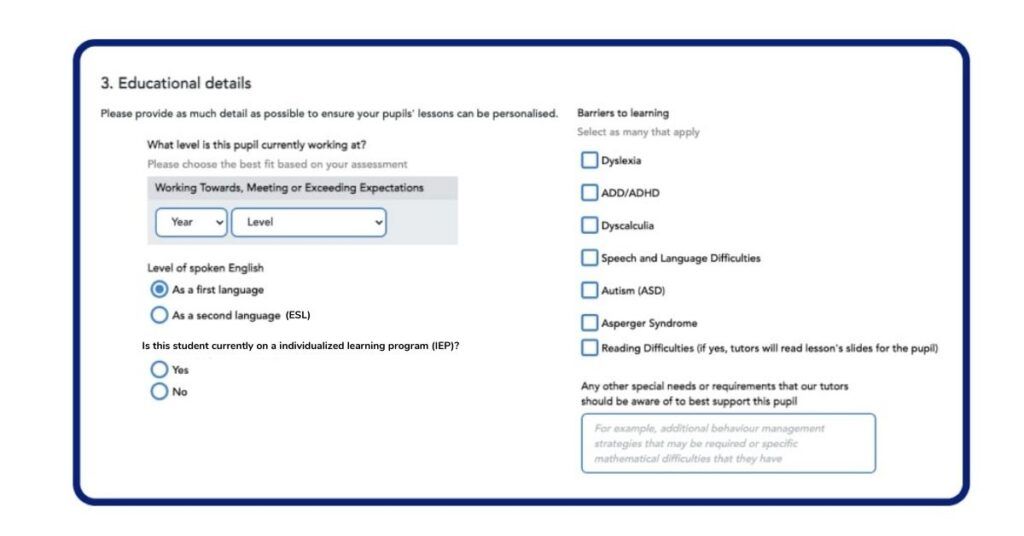
Read more about how to support IEP students:
– Dyscalculia In Schools: A Guide To Identifying And Supporting Students With ‘Math Dyslexia’
– ’How To Support A Child With Autism In The Classroom
– Teaching Strategies For Supporting Children With ADHD In The Classroom
– How Autism May Affect Students’ Understanding Of Math And What Teachers Can Do To Help
We know that neurodiversity is a spectrum, and can’t really be split into just 7 categories, making our current data collection not quite fit for purpose anymore. As a result, how we request information about a student’s disabilities is currently under review by our Teaching & Learning Team.
We want to be able to capture information that allows us to best support any student on their learning journey with Third Space Learning.
An important part of being able to create a personalized learning experience for students with disabilities is by requesting that teachers use a free text box to add any additional special accommodations or requirements that tutors should be aware of, in order to best support the student during their weekly sessions.
This added information is essential to replicate the strategies teachers adopt in the classroom for each student.
So, we have all this information about how to support individual students with disabilities in their math tutoring sessions. You might wonder how we ensure our tutors are equipped to adapt their teaching strategies to motivate and engage their students, no matter their individual needs.
Special Education training is an essential part of our rigorous tutor training program and the continuous professional development every tutor completes.
Essential tutor training and CPD to learn how to adapt teaching strategies
Every tutor at Third Space Learning completes our intensive training program, the Global Tutoring Program, which is designed to ensure tutors are equipped and empowered to deliver effective and engaging lessons.
The 40-hour program has been designed by former math teachers and pedagogy experts and is made up of:
- 24 online courses
- 13 webinars
- 4 sessions to listen to and learn from
- 6 demonstration sessions
Tutors can expect to learn various topics including how to engage students online, build rapport, personalize lessons and promote a growth mindset in the classroom. And, importantly in the context of this blog, a whole module is devoted to how to tutor students that receive Special Education (SPED) services.
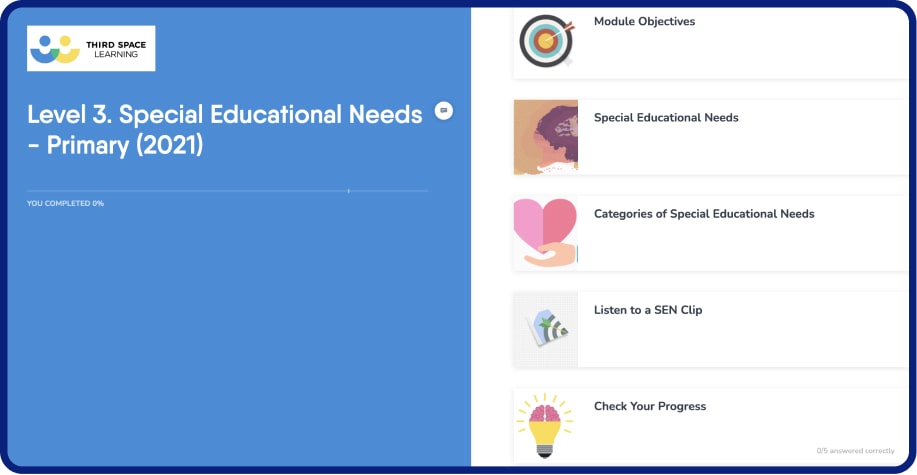
In the SPED training module, tutors will:
- Gain an understanding of what SPED means;
- Explore the four main areas of SPED (Communication and Interaction, Cognition and Learning, Social, Emotional and Mental Health and, Sensory and/or Physical);
- Learn how various disabilities manifest and the strategies to combat any common issues;
- Listen to a student with disabilities working with their tutor in a one-to-one session;
- Be asked 5 revision questions based on what they’ve learned so far.
This in-depth training prepares every tutor with the strategies to adapt their teaching methods to suit the needs of every individual student they work with.
Learning skills, such as allowing suitable processing time, are essential for tutoring any student in an online environment but can be even more important when working with a student with a disability.

After completing the Global Training Program, tutors will receive regular continuous professional development opportunities throughout their time with Third Space Learning.
Every two weeks, a tutor works through coaching resources on a variety of topics and, once again, student disabilities is a regular topic of focus for tutors.
The best part about these ongoing coaching resources is that they’re much more based on practical than theoretical – working through real sessions of tutors working with students with disabilities to find what was done well and what could be improved.
After all the training and development opportunities provided to every tutor, they go into sessions feeling confident that they have the skills to support students in getting the most out of their math lessons.
But, as many teachers would agree, teaching students with disabilities is different for every single student. We wanted to support tutors as they head into sessions and help to remind them of easy ways they can adapt their teaching methods, depending on various disability requirements.
To do this, we’ve created a brand new tutor preparation area filled with tips and details of teacher comments about each student.
Tutors go into every session prepared to deliver effective math lessons
As important as it is for the Third Space Learning experience to be as effective as possible for schools and students, we also must ensure that our tutors have all the tools they need to deliver high-quality one-to-one sessions. That’s why we recently gave our tutor preparation area an overhaul as part of our ongoing service improvement.
Every tutor logs on 10 minutes before every session they’re about to teach, and in this time, tutors refamiliarise themselves with their student’s progress so far, notes from previous sessions and any other relevant information that allows them to confidently deliver an engaging lesson. This includes any IEP requirements and teacher notes added when the student profile was created.
Previously, while all this information was available to tutors, it was tricky to find in the 10 minutes and involved lots of clicking! Our tutors’ time is precious, so we knew we needed to make this better, especially because, on average, tutors will have weekly sessions with 18 different students, all with different needs.
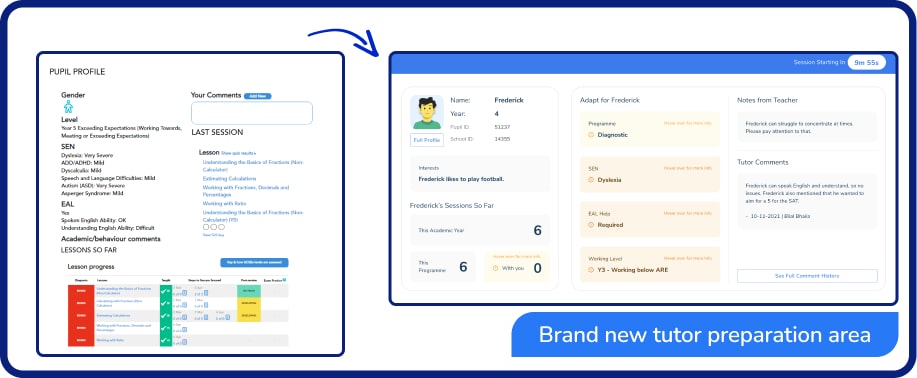
As well as putting all relevant information in one easy-to-use place, the most significant change we’ve made is creating an ‘Adapt For’ section for each student, which is populated with:
- The program they’re completing – our diagnostic program is the most popular and creates a personalized learning journey to suit every student;
- Individualized Learning Program requirements;
- English as an Second Language (ESL) requirements;
- The student’s grade working level.
Not only are these details placed together in the tutor preparation area, but they also come with definitions, reminders and tips to help tutors personalize their teaching more than ever before.
Using information from various sources, such as the Department of Education: Individuals with Disabilities Education Act (IDEA) and the Department of Education: Protecting Students with Disabilities, we’ve been able to create handy pop-ups for the common 7 types of disabilities a teacher may have selected in each student profile.
The pop-ups briefly explain and remind the tutor how the disability requirements manifest and actionable strategies and ideas to support the student during their session.
All this content has been developed by our in-house team of former teachers including Hannah Searle, who was previously acting as Special Education Needs and Disabilities Coordinator (SENDCo) in the UK.
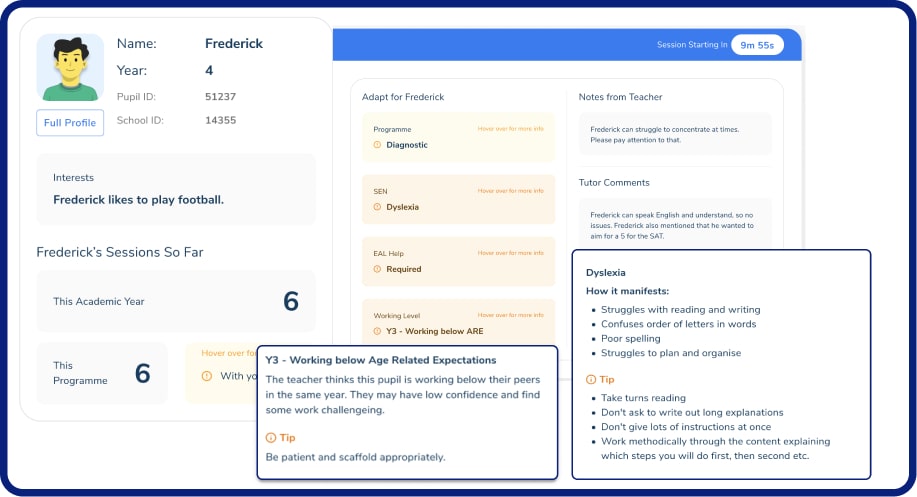
Tutors have access to this information for the following needs:
- Dyscalculia
- Dyslexia
- ADD/ADHD
- Autism Spectrum Disorder (ASD)
- Asperger Syndrome
- Speech and Language Difficulties
- Reading Difficulties
While testing the new tutor preparation area before going live, the feedback from tutors was overwhelmingly positive and lots mentioned that the tips for students with disabilities were incredibly useful.
It helped to remind tutors of all their training, the teaching strategies from previous sessions and new things they could try in their session so the student’s learning time in session is as focused as possible.

Now our tutors are equipped with specific information on their students’ needs, high-quality training and reminders of specific teaching strategies (especially for students with disabilities), it’s essential to have a learning environment that is fit for purpose.
That’s why we’ve made high-impact changes to our online classroom, when it came to font choice, slide structure, color palettes and writing styles. We also regularly review sessions and analyze what components create a successful session.
Improving our online classroom to create an optimum learning environment
Third Space Learning tutoring sessions take place in our secure interactive classroom. It’s here that students connect with their tutor; talking, drawing and typing their way through their personalized learning journey.
Ensuring the classroom is usable and effective for all learners, no matter their ability, is fundamental to closing the math attainment gap.
As part of many changes we’re making to the Third Space Learning experience, the design and layout of our lesson slides are being updated to increase student engagement and make the online classroom an easier place to navigate.
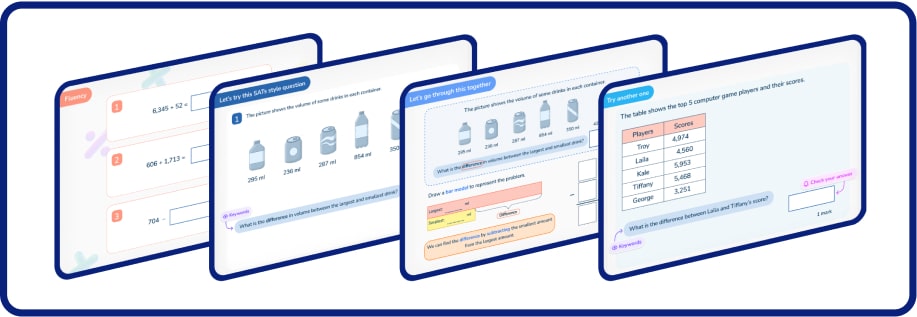
We wanted to share some of the small changes we’ve made that we know will have a huge impact on the session experience of all students, especially those with IEP requirements.
- We use size 14 font with 150% line spacing and the use of bold and blue for emphasis. Doing this avoids text running together and overcrowding on the slide.
- Our slides have an off-white background with dark fonts and we only use a faint pattern on title slides. This is due to white often appearing too dazzling and patterns can be too distracting. Tutors also have the ability to further change the slide color to suit the needs of the student they’re teaching.
- Our questions always use an active rather than passive voice and no double negatives are used throughout. This ensures that students are able to understand what they’re being asked to do and encourages them to keep trying.
- The use of images and diagrams is used in place of text as much as possible, which reduces the chance of students being overwhelmed, and can help tutors to explain concepts.
While following the IDA’s guidelines as closely as possible, some design aspects were based on logical assumptions from our team of academic experts and lots of testing.
With the needs of children changing all the time, we know that we must continue to evolve the Third Space Learning experience so that students get the most out of their personalized math lessons.

Our team of tutor mentors and former teachers regularly review thousands of sessions to ensure we’re delivering the most effective lessons possible. We follow a Math Mastery approach to our teaching, which really does fit into many strategies for teaching students with disabilities.
By analyzing huge numbers of sessions, we can ensure that tutors aren’t just simplifying their teaching methods, but rather finding different ways to communicate information that is appropriately challenging and not overwhelming.
By doing this, we’re able to engage and motivate students throughout their program, giving them all the same opportunities to learn as their peers.
Watch how a tutor adapts their teaching for a student with disabilities
So far, we’ve explored the steps we take to ensure our tutors are able to adapt their one-to-one teaching to suit the needs of students, especially with disabilities. But don’t just take our word for it, we wanted to share this 3-minute clip of tutor, Iffah, working with a student with additional needs.
A bit of background information about the student’s needs:
- They’re in 2nd grade, but their working level is closer to kindergarten;
- IEP requirements on their student profile are ‘Severe Autism’ and ‘Moderate Reading Difficulties’;
- Additional teacher comments are; “Needs help with reading and writing. Requires prompting to keep on task. Moderate learning difficulties.”
Disclaimer: This video has been edited slightly to keep the student anonymous. You will notice small jumps in the session where Iffah says the student’s name.

Hannah, a member of our Teaching & Learning Team (and a former acting SENDCo), reviewed this session for us. She’s highlighted all the ways Iffah has created a comfortable and motivating learning environment for the student.
- Iffah reads out everything on the screen but also uses her mouse, which indicates to the student where they should be looking;
- Lots of listening to the student and allowing time for them to think and respond rather than filling the silence;
- When the student doesn’t quite understand what’s being asked of them, Iffah reiterated what she meant in a clearer way;
- Iffah uses the student’s name throughout, which can refocus a student and let them know that you’re expecting an answer from them;
- We’re big on praise in the classroom at Third Space Learning, and Iffah continuously praises the student throughout the session, which is extremely motivating for any student.
- There were different intonations in Iffah’s voice which can be overstimulating for students with disabilities, but it was clear to the student the difference between excited, motivating praise and slowly, steadily reading the question.
We’re proud of how Iffah has been given the training and tools to be able to support this student so successfully, and we know she is just one of many tutors who can adapt teaching strategies to suit the needs of their students. This is really important to us because we’re currently supporting more specialist schools than ever before!
Additional resources suitable for every student in your classroom
Creating engaging tools to suit all students’ needs doesn’t stop at our one-to-one interventions. We’ve made sure there are resources readily available to suit the needs of every student at your school.
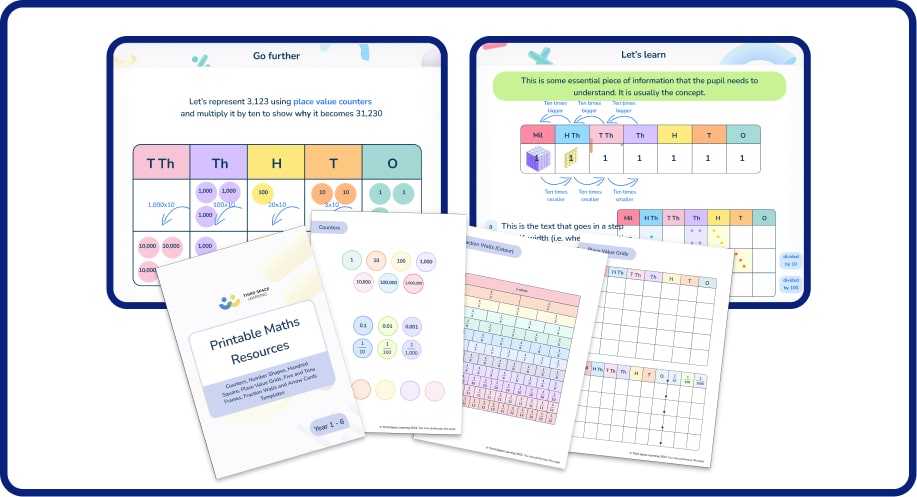
Ensuring Third Space Learning’s one-to-one tutoring is the right fit for your students
While we are taking all these steps to create a learning environment that can support students with various additional needs, we know that we aren’t going to be the right intervention for all students with IEP requirements.
Our weekly sessions take place online and students communicate with their tutor via an audio link through personal headsets, with no video/camera. For some students, this can be potentially overwhelming or overstimulating and could add a barrier to building a stronger relationship with their tutor.
We do have the tool for students and tutors to communicate via typing on the screen, and this does suit children with disabilities in some cases, who for example are non-verbal.
However, it can sometimes be tricky to encourage the student to explain their reasoning and sways more towards a student just giving a right or wrong answer. It can also hinder the overall flow and progress of the lesson as tutors often find themselves waiting for their students to reply for longer periods of time.
This being said, as teachers, you know what works best for your students, and the teaching strategies and interventions that would be suitable for them. So, if you think our one-to-one low or high-dosage tutoring would work in your school, we’d love to hear from you!
Do you have students who need extra support in math?
Give your students more opportunities to consolidate learning and practice skills through personalized math tutoring with their own dedicated online math tutor.
Each student receives differentiated instruction designed to close their individual learning gaps, and scaffolded learning ensures every student learns at the right pace. Lessons are aligned with your state’s standards and assessments, plus you’ll receive regular reports every step of the way.
Personalized one-on-one math tutoring programs are available for:
– 2nd grade tutoring
– 3rd grade tutoring
– 4th grade tutoring
– 5th grade tutoring
– 6th grade tutoring
– 7th grade tutoring
– 8th grade tutoring
Why not learn more about how it works?
The content in this article was originally written by the lead customer communications team Sara Meikle and has since been revised and adapted for US schools by elementary math teacher Christi Kulesza.

